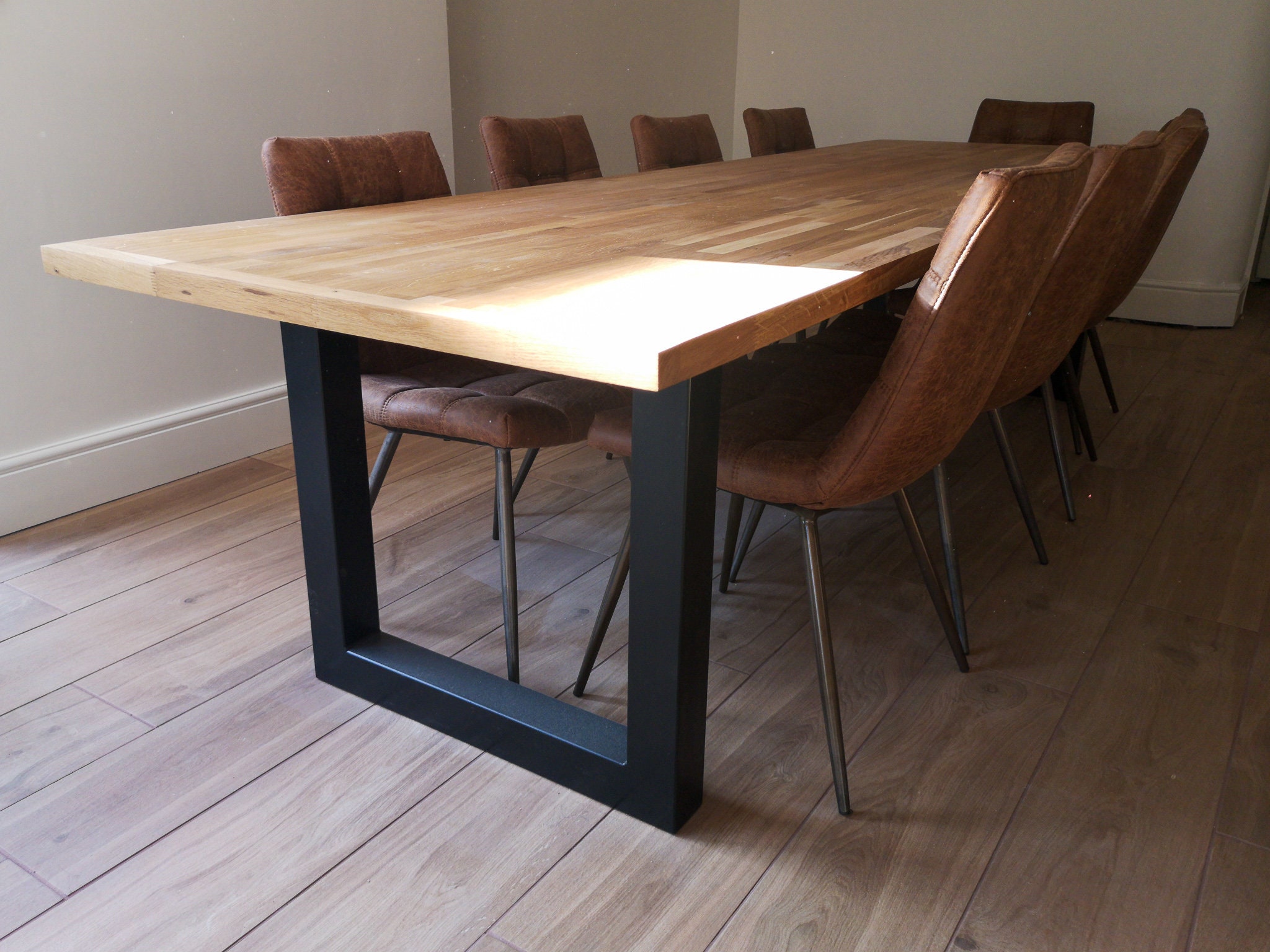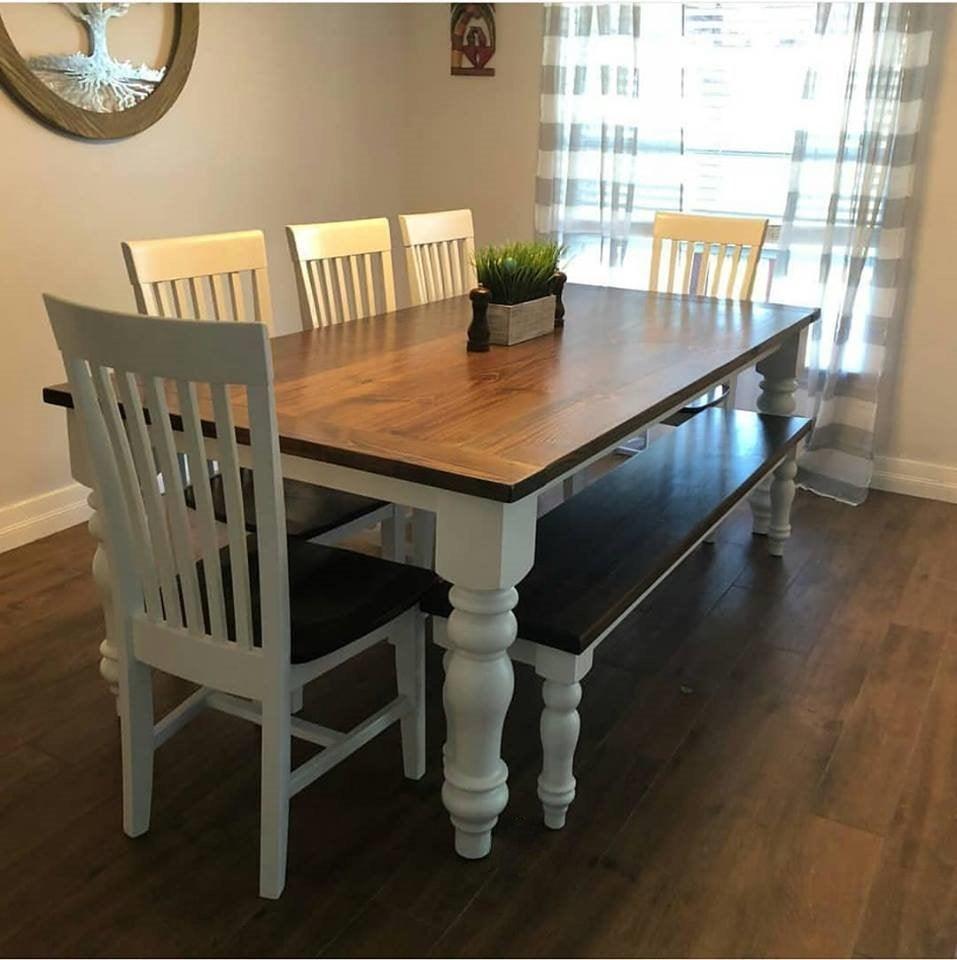A Thorough Consider Dining Table Leg Styles: Finding the Perfect Suit
Choosing the best eating table leg design is important for both aesthetic appeal and functional performance. Traditional 4 legs use timeless beauty and stability, while the stand base offers increased legroom and a modern-day look. For those with bigger tables, trestle legs ensure tough support, whereas barrette legs introduce a mid-century modern ambiance with their minimalist layout. The x-shaped legs blend modern style with enhanced security. Each of these alternatives brings one-of-a-kind benefits, making the selection greater than just an issue of choice. Explore additionally to discover which design perfectly enhances your dining area and way of living.
Traditional Four Legs
Among the different types of dining table leg designs, the standard four-leg style stays an ageless choice for many households. 4 legs offer balanced assistance, making certain the table continues to be steady and capable of bearing considerable weight (dining room table legs).
From an aesthetic perspective, the traditional four-leg layout can be quickly adapted to various interior styles. Whether crafted from timber, steel, or a combination of products, these legs can be elaborately carved, smooth and minimalistic, or anything in between. Their flexibility allows them to enhance both rustic and contemporary settings flawlessly.
Additionally, the simple structure of the four-leg layout assists in ease of activity and placement within an area. Unlike more facility bases, this style decreases obstructions, providing adequate legroom for diners. In summary, the standard four-leg table leg style weds enduring sophistication with sensible performance, making it a sharp option for those looking for both type and feature in their dining furniture.
Stand Base
Typically commemorated for its stylish and space-efficient layout, the pedestal base is a notable alternative to the typical four-leg configuration in table leg designs. This distinctive base commonly features a single central column sustaining the tabletop, which can vary in type, from ornately sculpted wood to streamlined, contemporary steel. Among the primary benefits of the stand base is its ability to take full advantage of legroom and seating versatility. Without edge legs, diners are paid for higher liberty of movement, making it a perfect selection for round and oblong tables that promote more intimate and inclusive events.
Moreover, the stand base's central support can handle substantial weight, allowing for the use of heavier table tops, such as marble or thick wood. This stamina combined with its aesthetic flexibility makes the pedestal base a popular option in both typical and contemporary interior settings. It can perfectly integrate with numerous design motifs, from timeless style to minimal modernity. The main column itself supplies a canvas for complex styles and artistic expressions, including a component of visual passion underneath the table. In summary, the pedestal base incorporates performance snappy, making it a refined and functional choice for diverse eating atmospheres.
Trestle Legs
Trestle legs supply a robust and ageless foundation for eating tables, characterized by their straight cross-bracing and strong support beams. Originating from medieval times, this style has actually progressed yet kept its essential framework, making it a seasonal favorite in like it both typical and modern setups. The central trestle beam of light, frequently sustained by two or more upright blog posts, provides exceptional stability, permitting larger table sizes without the demand for added legs.
A significant benefit of trestle leg tables is the enough legroom they provide. Unlike tables with 4 edge legs, the absence of obstructions at the table's sides offers unblocked room for chairs and diners, improving convenience and access. This makes trestle tables suitable for suiting larger gatherings, whether in a dining-room or a reception hall.
From rustic farmhouse to streamlined contemporary layouts, trestle legs can be personalized to fit specific preferences. Their long-lasting allure and functional advantages make trestle legs a compelling option for those seeking both style and practicality in their dining table.
Hairpin Legs

The allure of barrette legs hinges on their simplicity and convenience - dining room table legs. Available in a series of materials, including steel and brass, they can be completed in countless colors to match various indoor designs. Whether coupled with a rustic wood table top or a modern glass surface, hairpin legs effortlessly blend performance with a touch of vintage appeal
Longevity is another noteworthy function of barrette legs. Regardless linked here of their fragile appearance, these legs are engineered to bear substantial weight, making sure the eating table continues to be stable and protected. Furthermore, they are relatively easy to install, making them a prominent selection for DIY lovers and professional furnishings makers alike.
X-Shaped Legs

Created from materials such as steel, wood, or a combination of both, X-shaped legs can be tailored to match different layout choices. Steel legs often provide a smooth and commercial feeling, perfect for loft-style homes and modern dining rooms.
In addition, the design behind X-shaped legs guarantees even weight circulation, minimizing the risk of wobbling and improving toughness. This makes them specifically fit for bigger table that call for added assistance. Basically, X-shaped legs mix sensible design with modern-day aesthetics, making them a timeless choice for varied dining environments.
Conclusion
A detailed understanding of dining table leg styles exposes the distinct characteristics and advantages of each design. Trestle legs make certain robust assistance for bigger tables, and hairpin legs present a mid-century modern visual.
Comments on “Distinct Dining Room Table Legs to Transform Your Eating Location”